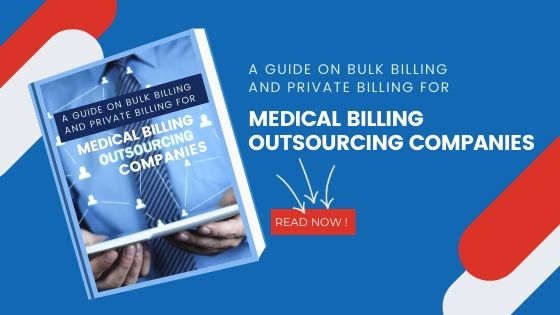Usually coding the patient’s symptoms differs from one specialty to another. When it comes to OB/GYN, the particular ICD-10 codes are rarely used in any other form of medicine. Keeping women’s health in mind, these codes are unlikely to crop up at the cardiology professional’s office or an emergency center. There are many ICD-10 codes involved for various specialties. But for OB/GYN, billing stays unique with these common ICD-10 codes which are helpful for the physician’s practice.
Understanding CPT Codes for OBGYN Services: A Comprehensive Guide
As an OBGYN, it’s important to understand the complex world of medical billing and coding. CPT codes are a crucial part of this process, as they help ensure that you are properly reimbursed for the services you provide. In this guide, we’ll break down everything you need to know about CPT codes for OBGYN services, including common codes and tips for accurate billing.
What are CPT codes and why are they important for OBGYNs?
CPT codes, or Current Procedural Terminology codes, are a standardized system of codes used to describe medical procedures and services. They are essential for OBGYNs because they help ensure accurate billing and reimbursement for the services provided. Without proper understanding and use of CPT codes, OBGYNs risk underbilling or overbilling for their services, which can lead to financial loss or even legal issues.
Understanding the different categories of CPT codes for OBGYN services.
CPT codes for OBGYN services are divided into several categories, including evaluation and management, surgery, radiology, pathology and laboratory, and medicine. Each category has its own set of codes that correspond to specific procedures and services. It’s important for OBGYNs to understand which category their services fall under and to use the appropriate codes to ensure accurate billing and reimbursement.
Common CPT codes used in OBGYN practices
OBGYN practices use a variety of CPT codes depending on the services provided. Some of the most common codes include 99213 for a mid-level office visit, 59400 for routine obstetric care including antepartum care, delivery, and postpartum care, 58301 for a routine pelvic exam, and 76805 for a transvaginal ultrasound. It’s important for OBGYNs to stay up-to-date on the latest CPT codes and guidelines to ensure accurate billing and reimbursement.
ICD-10 codes most commonly used for OB/GYN billing:
- Z01.419 – Encounter for Gynecological Examination (GENERAL) (ROUTINE) without abnormal findings.
This ICD-10 code covers routine visit from a patient to their OB/GYN. According to most industry experts, women between the ages of 21 and 29 should see their gynecologist at least once a year. Women ages 35 to 65 who have had negative Pap test results only need get a new test every 5 years, whereas women 65 and older do not need such screenings at all.
- Z12.31 – Encounter for screening mammogram for Malignant Neoplasm of the breast
Given that 1 in 8 US women that is about 12.4 percent will develop invasive breast cancer in their lifetimes, it’s important to get screened regularly. Most OB/GYNs offer such screenings as a normal part of a routine check-up.
- N80.9 – Endometriosis, Unspecified
The stigma surrounding endometriosis has been something of a hot button issue lately, with many healthcare providers and ad campaigns centered on educating women about the diseases and encouraging them to speak up. Doctors are able to provide counseling and pain relief to individuals facing this diagnosis.
- Z34.01 – Encounter for supervision of first pregnancy, first trimester
This code is exactly what it sounds like- a patient who has come into their gynecology professional’s office to be examined during their first trimester of pregnancy.
- 099.011 – Anemia complicating pregnancy, first trimester
Especially for individuals suffering from anemia before they’re pregnant, the risk of anemia developing during a pregnancy has been increasing. There are three types of pregnancy-related anemia: iron-deficiency anemia, folate-deficiency anemia, and Vitamin B12 deficiency. A patient’s provider can administer blood tests to help determine which version she has, and can recommend treatment accordingly.
- V25.5 – Encounter for contraceptive management, insertion of implantable sub-dermal contraceptive
Z30.018 – Encounter for initial prescription of other contraceptives
There is a wide variety of birth control methods available in the current market. An IUD is referenced in this first code, and should be implanted by a healthcare professional. Many traditional forms of birth control include pills and shots, which can be prescribed during a visit and then acquired according to a patient’s schedule.
- N97.9 – Female infertility, Unspecified
About 10 percent of women aged from 15 to 44 have difficulty getting pregnant or staying pregnant. There are numerous causes for female infertility, and an OB/GYN can definitely help identify and potentially resolve the issue.
- Z11.3 – Encounter for screening for infectious with a predominantly sexual mode of transmission
The CDC has reported that rates of syphilis, gonorrhea and chlamydia have climbed to record highs, following 4 consecutive years of growth. OB/GYNs are equipped to screen, test, and treat STDs, but only if a patient takes the time to make an appointment and to be checked out.
Three scenarios to follow ICD-10 codes in OB/GYN billing:
Scenario 1:
Let’s assume the postpartum as the reason for the patient’s visit. She decides to visit the OB/GYN physician in order to discuss the birth control treatment options or plans. In this case the healthcare professional is mandated to check the patient’s history and educate the patient about the birth control treatment options or plans. Patient chooses to go with the hormonal intrauterine device (IUD). Now the healthcare provider places the order for the device and suggests the patient to return to another follow up appointment for the insertion of the device. This is how codes should be billed outside of the postpartum visit codes:
CPT ICD-10 Codes:
99213 to 24: Unrelated evaluation and management service by the same physician or other qualified health care professional during a postoperative period.
DX ICD-10:
Z30.09: Encounter for other general counseling and advice on contraception. (Mentioned as the primary DX code and the sequencing is done accordingly)
Z30.014: Encounter for initial prescription of intrauterine contraceptive device.
Scenario 2:
Let’s assume that a patient visits an OB/GYN physician for her prenatal routine visit and explains the condition of virginal discharge with odor. Then doctor proceeds for an exam and then suggests collecting culture for a wet prep and finally confirms the prognosis as acute vaginitis. Then the physician or healthcare professional educates the patient about bacterial vaginosis and orders a treatment with clindamycin. This is how codes must be billed outside of the routine prenatal visit codes:
CPT ICD-10 codes:
99213- Office or other outpatient visit for the evaluation and management of an established patient, which requires at least 2 of these 3 key components: An expanded problem focused history; an expanded problem focused examination; Medical decision making of low complexity.
87210- Smear, primary source with interpretation; wet mount for infectious agents (e.g., saline, India ink, KOH preps).
HCPCS Level II Q0111- Wet mounts, including preparations of vaginal, cervical or skin specimens (rather than 87210) for the wet prep.
DX ICD-10:
N76.0- Acute vaginitis (mentioned as the primary DX code and the sequencing are done accordingly).
The OB/GYN physician or professional should be ready to document clinical information of the visit on the encounter notes. If the physician sees a patient diagnosed and treated for conditions or problems outside the global period, but not seen in an E&M service level billed, it’s important to notify the provider for corrections on the records.
Scenario 3:
Let’s assume that a patient comes in for a postpartum visit. She has explained the condition to the OB/GYN physician stating high levels of depression and self-harming tendencies. Similar to the above mentioned physician examines entire patient’s history to determine whether the patients have had actual behavioral health symptoms before or just due to postpartum depression. Then the patient is referred to a psychologist by the OB/GYN physician and then patient is prescribed with antidepressants. The referring provider then provides a referral form and the patient visits the psychologist in another separate appointment. This is how ICD-10 codes must be billed outside of the postpartum visit codes:
CPT ICD-10 codes:
99214 to 24: 24 Office or other outpatient visit for the evaluation and management of an established patient, which requires at least 2 of these 3 key components: A detailed history, a detailed examination, medical decision making of moderate complexity.
DX ICD-10:
F53.0: Postpartum depression (mentioned as the primary DX code and the sequencing are done accordingly).
There is a handful of codes which OB/GYNs can depend on. Outsource OB/GYN billing and coding to best healthcare billing companies, who can handle all the exclusive tasks like a pro. It would moreover help to improve reimbursement rates.
For more updates and queries on healthcare, Please subscribe to our blog. Do follow us for more medical coding updates.




